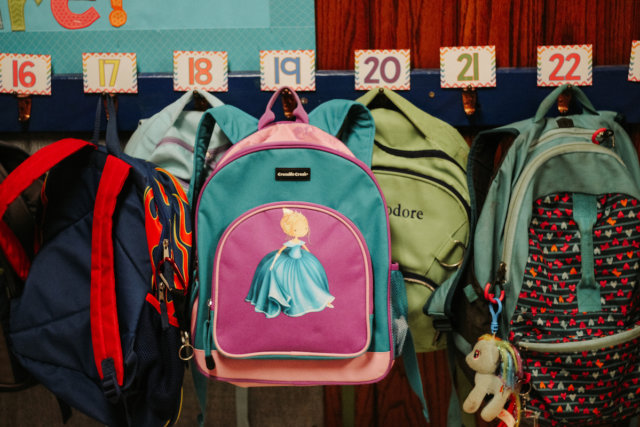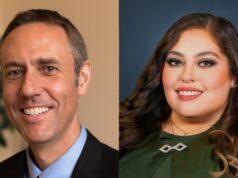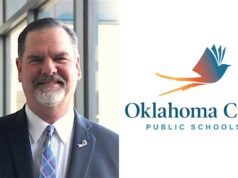
The OKCPS faces a perfect storm with regard to student discipline. The policy calls for sharp reductions in suspensions, but it lacks other means of dealing with misbehavior. Teachers say they face “extremely large class sizes [that] make it more difficult even for career teachers,” according to a report from The Oklahoman’s Tim Willert. Too often, disorder is “out of control schoolwide, especially with new teachers.”
One of the biggest problems is the decades-old ideology that places way too much responsibility for classroom management on teachers. In 2000, an OKCPS leader told the MAPS for Kids Achievement Committee that 95 percent of student disruption would disappear if classroom instruction improved. Back then, administrators had to repeat such absurd, completely made-up claims, but few actually believed them. Our problems worsened when a new generation of administrators – who often believed their slogans – took charge of the district.
The OKCPS continues to brush off the cognitive science best explained by Nadine Burke and Paul Tough. In a March 2011 article in The New Yorker, the pair describe what happens in high-poverty schools where children have survived multiple adverse childhood experiences. When eight or 10 students in a class of 30 experience the chemical imbalances such trauma creates, Tough concluded, they help “create in a classroom a culture of hitting, of fighting — not just for the ten kids but for all thirty.”
The challenge of creating safe and orderly learning climates is the most important but most difficult part of educators’ jobs. As usual, the dilemmas teachers face are maddeningly complex. Although I believe they are dead wrong, I understand why many central-office administrators have long treated student discipline as the third rail of education politics and why today’s central-office administrators are even more likely to blame teachers and principals for chronic disorder.
A set of guiding principles helps frame classroom discipline
When I entered the classroom at the peak of the crack and gang crisis of the early 1990s, I had a decade of experience defusing inner-city conflicts. My first rule was, “Listen to the students, and they will teach you how to teach them.” My second rule was, “Care enough to say, ‘No.’” (My relatively strict classroom management freaked out my principal, who said she couldn’t figure me out: I was a liberal with deep ties to the community but also a disciplinarian.)
As I first entered the ninth-grade John Marshall classroom, I saw the same low expectations that outraged a new generation of Teach for America cadets who were destined to lead in corporate school reform. In 1994, many of my students and I were returning to school after camping at “Sleepy Hollow Camp,” as I will call it. As was true in previous summers, the camp’s rural white staff expressly complimented the children from the urban neighborhoods, saying that they showed more responsibility than their suburbanite counterparts. So it was a double jolt for me to witness the horrible behavior of many students – including several of my campers – as they walked into the building.
In much of John Marshall, classes went smoothly; for instance, misbehavior was virtually unknown in junior and senior classes. In my part of the building, however, the deplorable behavior of the halls continued inside the classroom. I even faced resistance instigated by a fellow camper who had been one of my basketball partners during the summer. When I told Marvin (as I’ll call him) to stop talking while I was talking, the six-foot four-inch ninth-grader started sucking his thumb.
Parents who had raised their children to be respectful and responsible only to see the outrageous behavior that was so common at school frequently felt the system betrayed them. Youngsters who knew how to act properly at church, in elementary school or on the job would often start running wild once they got into middle school. The mayhem could continue into high school. Now, much more of the tumult begins in the earlier grades.
Central offices have a way of undermining professional autonomy
Our schools’ shortcomings were legacies of complex historical forces, but too many administrators, reformers and some patrons made snap judgments that bad teaching caused the anarchy. Actually, chronic disorder caused most of the ineffective instruction. The single biggest unforced error – data-driven accountability – grew out of this frustration.
Most of my principals would have liked to have provided disciplinary backing so teachers could teach in a meaningful manner, but ill-defined quotas for assessing consequences had them stymied. The number of disciplinary referrals that could be processed usually lacked explicit caps, and that uncertainty was problematic. Principals had to repeatedly guess how many actions they would be allowed to take in support of their teachers.
Several times, I saw school administrators and teachers come together, establish a credible code of conduct and create orderly school climates that allowed for improved teaching and learning. With only two exceptions in 17 years at neighborhood schools, someone at the central office would eventually order a reduction in disciplinary consequences. Our hard-earned professional autonomy would be rescinded. We’d have the same adults and the same students in the same building, but our once-orderly and respectful building would revert back to the often-chaotic status quo.
The inability of the OKCPS to establish safe and orderly learning environments then drove the over-expansion of charter schools. This left behind schools with even greater concentrations of traumatized kids who didn’t control their behavior because they often couldn’t control their behavior. Suspensions aren’t the answer, but neither is leaving their pain unaddressed.
Students who act chaotic often have chaotic lives
By the end of my full-time career at Centennial H.S., during the Great Recession, I would have classes where:
- two-thirds or more of my students had special education plans or were English-language learners;
- the majority of my students carried felony raps; and
- a half-dozen kids were suffering from full-blown mental illnesses.
I had a class where two students had recently witnessed the murder/suicide of their parents and two others had recently seen a parent murdered. This was during a year when a record number of students buried the grandparents who had raised them. Such distinctions were lost on the central office, which imposed one-size-fits-all mandates.
Future decisions should be based on past successes
Even with the OKCPS’s budget shortfalls, educators shouldn’t be facing the nonstop crises of the horrific crack and gang years or the Great Recession. I’m afraid, however, that unforced policy errors have done that seemingly unlikely deed.
And that brings me to my greatest fear: Too many times, I’ve witnessed a cycle where principals and teachers take control, establish a credible code of conduct, put in the work required to turn a school around, and adults and students responded with dignity and with increased learning. Too often, when the plug was pulled on those efforts, the result was despair, blood-soaked halls and anarchy.
I worry that history will repeat itself.





















